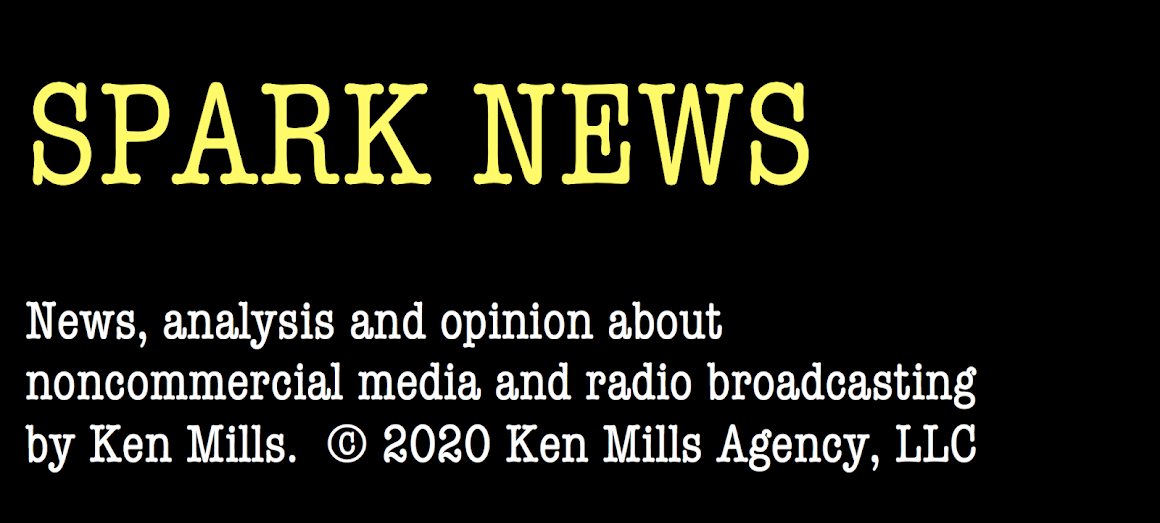 |
| David Giovannonl |
David
Giovannonl, one of the most influential people in the formative years of public
radio, reappeared last week with an op-ed in Current [link} about changes in listening to NPR News stations
since the on-set of the Covid-19 pandemic.
Giovannoni’s
message was both troubling and instructive: People who are in public radio's core and fringe
cohorts are listening less to NPR News stations than they were prior to the
disruption caused by the virus. Plus, listening by fringe listeners declined
substantially after the pandemic hit.
(Explainer:
“Core” listeners are people who listen more to one station than any other –
their first choice, so to speak. “Fringe” includes all other listeners than the
core.)
According
to Giovannoni, the rapid change was due, in part, to people working from home
instead of commuting to jobs. When people are not in vehicles they tend to
listen less to traditional radio.
The
changes in lifestyles after the pandemic took hold in mid March, caused 43% of
fringe listeners of NPR News stations to vanish. This is important because
fringe listeners are a major portion of the “reach” of NPR and the gateway for
listeners to become members.
Giovannonl
based his analysis on Nielsen PPM data from March, April May and June for 91
full or part-time NPR News/Talk stations in 45 markets. In his op-ed, he said
there is no guarantee that the missing listeners will come back if or when the
Covid-19 pandemic eases:
“Without daily
opportunities to listen in cars and offices, more than half of NPR News
stations’ away-from-home tune-ins disappeared, taking with them 15 million
out-of-home listener-hours.”
“We might have expected
listeners to pick up the slack at home. Some did, but their aggregate increase
of only 2 million at-home listener-hours left NPR News stations about 13
million listener-hours short — a loss of a quarter of all listening to NPR News
stations.
Giovannonl
is also concerned that that the size of NPR News stations core audience is not
growing like it had been for most of the past four years.
Spark News is seeing the same
trends.
We published the chart on the right earlier in July showing the decline
in estimated weekly listeners (“cume”) by 15 of the most influential NPR
News/Talk stations.
We
compared the number of estimated weekly listeners in the February Nielsen PPM
ratings with Nielsen data from June.
All 15 stations had fewer weekly listeners
in June.
Estimated weekly listeners for the 15 stations combined dropped about
almost 20% during the February to June period.
Of
course, almost all radio stations – noncom or commercial – have lost weekly
cume listeners because of changes caused by the pandemic. If the pandemic
continues indefinitely, which is a real possibility, traditional broadcasters
will need to make hard choices such as whether to stay in business.
Giovannoni
summed up his Current op-ed with this cautionary remark:
“The headlines three
months into the pandemic aren’t encouraging. The Core’s reliance on NPR News
stations is still strong but weakening. It is unknown whether these essential
listeners find NPR News stations less listenable, less compelling or less
relevant.””
DAVID GIOVANNONI TODAY
It
is good to see David Giovannoni back in action.
Now he is reprising his “speak truth to power” role when it is really
needed.
Giovannoni
retired from public radio research in 2006. He still has the title of President
of AudiGraphics Inc., the research company he founded in the late 1970s.
He
has followed his passion for historic audio recordings. He is a partner in First Sounds [link], a nonprofit
organization with a mission to seek out the world’s oldest sound recordings –
wherever they are.
Giovannoni
has assembled what is said to be the world’s most significant collection of
early cylinders and disc records, which he makes available to historians.
He
has been nominated for several Grammy Awards for Best Historical
Documentary. As a private collector
Giovannoni has curated two collections that have been inducted onto the National Recording Registry by the Librarian of
Congress.
You
can read more about his work here.
We
found a YouTube video on the First Sounds
website narrated by Giovannoni that describes his work with early sound
recordings.


No comments:
Post a Comment